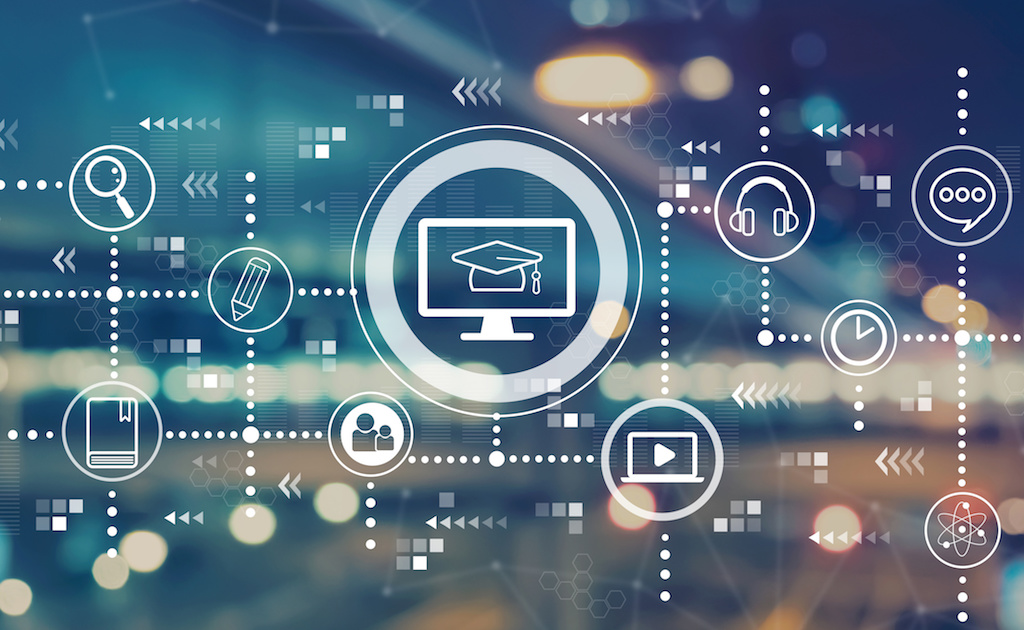AI in Teaching: Shaping the Future of Education Through Innovation
Artificial Intelligence is redefining the way educators teach and students learn. The concept of artificial intelligence in education encompasses its implementation challenges, ethical considerations, and potential benefits, making it indispensable in classrooms worldwide. From tailoring lessons to individual needs to streamlining administrative tasks, AI tools are creating a more efficient and supportive environment for teachers and students alike.
As these technologies evolve, they are not only enhancing learning outcomes but also paving the way for a future where education is more accessible and inclusive.
Understanding AI’s Role in Teaching

AI technologies are significantly reshaping how educators teach and students learn. By integrating AI tools into classrooms, teachers can deliver more tailored learning experiences and handle administrative work more efficiently. This dual role allows educators to focus on meaningful teaching while streamlining repetitive tasks. Here’s a closer look at how AI is transforming education.
The Benefits of AI in Education
Artificial intelligence (AI) is poised to revolutionize the education sector by offering a multitude of benefits to students, teachers, and educational institutions. Here are some of the key advantages:
Personalized Learning: AI can tailor educational experiences to meet the unique needs, abilities, and learning styles of individual students. This personalized approach not only boosts student engagement but also leads to improved learning outcomes. By analyzing student performance data, AI can identify areas where students need more support and adjust lesson plans accordingly.
Intelligent Tutoring Systems: AI-powered tutoring systems provide one-on-one support to students, offering real-time feedback and guidance on complex concepts and skills. These intelligent tutoring systems can adapt to each student’s learning pace, ensuring they grasp difficult topics before moving on.
Automating Administrative Tasks: AI can automate routine administrative tasks such as grading, data analysis, and scheduling. This automation frees up valuable time for teachers, allowing them to focus more on teaching and providing personalized support to their students.
Enhanced Accessibility: AI-powered tools can make educational resources more accessible to students with disabilities. For instance, text-to-speech software and real-time language translation services can help students with visual or hearing impairments access and engage with learning materials more effectively.
Improved Academic Integrity: AI tools can detect plagiarism and academic dishonesty, promoting a culture of integrity and originality in student work. By analyzing vast databases of published work and online content, these tools can quickly identify instances of copied or unoriginal work, ensuring fair assessments.
By leveraging these benefits, AI is not just enhancing the efficiency of educational processes but also creating a more inclusive and supportive learning environment for all students.
Personalized Learning Experiences with Adaptive Learning Platforms
AI has the unique ability to adapt to the individual needs of students, making education more personal and effective through individualized learning. Adaptive learning platforms utilize algorithms to analyze student performance, adjusting lesson plans to focus on areas where they need the most help. These platforms often provide instant feedback, creating an interactive and dynamic learning environment.
For example, tools like DreamBox or Smart Sparrow adjust their curriculum in real time based on how students respond to questions, enhancing learning outcomes. AI even supports educators in creating customized learning paths for each student, ensuring that no two learners progress in the same way. This approach not only improves student engagement but also delivers measurable improvements in performance.
By empowering teachers with these tools, AI bridges the gap between traditional classroom methods and modern needs, ensuring every student receives attention tailored to their strengths and challenges.
Automating Administrative Tasks
AI doesn’t just enhance teaching—it also takes a load off teachers by handling several administrative duties, including lesson planning. Tasks like grading, tracking student progress, and scheduling can easily consume hours each week. AI solutions such as Gradescope have automated the grading process, significantly reducing the time teachers spend reviewing answers.
Educational platforms powered by AI also generate progress reports, offering educators detailed insights into student improvements over time. Scheduling tools can even assist in organizing parent-teacher conferences or allocating classroom resources efficiently.
What does this mean for you as a teacher? It means you get to focus more on interaction and less on paperwork. With advancements in tools that automate these repetitive yet crucial tasks, educators can dedicate their energy to fostering creativity and understanding in the classroom.
AI’s role in streamlining these processes not only saves time but also enhances the overall experience for both teachers and students.

AI Applications in the Classroom
As technology becomes a cornerstone of modern education, AI is playing an increasingly pivotal role in classrooms. Adaptive learning platforms are a key component of AI’s role in education, customizing learning experiences for individual students. It is reshaping teaching methods, empowering students, and fostering inclusivity like never before. Here’s how AI is transforming classroom experiences in two significant ways.
AI-Powered Interactive Learning with Intelligent Tutoring Systems
AI-driven tools have made learning more engaging and fun for students by incorporating interactive lessons through platforms like games and virtual classrooms. Educators can capture the attention of young learners while improving their outcomes. For example, platforms such as Kahoot! allow teachers to design quizzes that feel like play, rather than tests. This kind of AI-powered gamification keeps students motivated while reinforcing key concepts.
Virtual classrooms, powered by AI, provide another layer of accessibility and interaction for students. These platforms adapt instructional content in real-time, offering a personalized learning pace for each participant. The results? Improved long-term retention and higher levels of engagement.
Platforms leveraging AI for interactive processes are more than tools; they are enablers of a powerful learning ecosystem.
Assistive Technology for Inclusive Education
AI is also a game-changer for students with disabilities. It offers tailored resources that cater to individual needs, leveling the playing field in education. Tools like text-to-speech software and real-time language translation services let students focus on learning rather than struggling with barriers.
Additionally, AI enhances accessibility through features like voice commands, smart note-takers, and automated closed captioning. These innovations help students who are visually impaired, hard of hearing, or have mobility challenges thrive in classroom settings. For example, AI-powered platforms can convert written notes into audio formats, ensuring everyone has access to the material in ways that suit their needs.
What makes AI truly transformative here is its ability to provide equitable opportunities. When applied thoughtfully, this technology ensures that classrooms are inclusive spaces that celebrate diversity and accommodate various abilities.
Generative AI Tools in Education
Generative AI tools represent a groundbreaking advancement in AI technology, capable of creating new content such as text, images, or music based on learned patterns and structures. These tools are opening up new avenues for student learning and engagement with complex concepts. Here are some exciting applications of generative AI tools in education:
AI-Powered Educational Games: Generative AI tools can develop interactive and immersive educational games that adapt to the learning styles and abilities of individual students. These games make learning fun and engaging, helping students grasp complex concepts through play. For example, AI-generated games can simulate historical events or scientific phenomena, providing a hands-on learning experience.
AI-Generated Lesson Plans: Teachers can leverage generative AI tools to create customized lesson plans that cater to the specific needs of their students and classes. These AI-generated lesson plans can incorporate diverse teaching materials and methods, ensuring that each student receives a well-rounded education tailored to their learning style.
AI-Powered Virtual Labs: Generative AI tools can create virtual labs and simulations, allowing students to explore complex concepts and phenomena in a safe and controlled environment. These virtual labs provide hands-on experience without the need for physical resources, making advanced scientific experiments accessible to all students, regardless of their geographical location.
By integrating generative AI tools into the educational landscape, educators can provide more dynamic, personalized, and effective learning experiences. These tools not only enhance student engagement but also help in understanding and mastering complex concepts in innovative ways.

Ethical Considerations in Using AI for Teaching
The integration of Artificial Intelligence in teaching comes with tremendous benefits, but ethical considerations must remain at the forefront. As AI tools continue to assist educators, there are critical areas that require thought and scrutiny. These include ensuring academic integrity and fair access to educational resources.
Plagiarism Detection and Integrity Monitoring
AI tools have become key players in maintaining academic integrity through plagiarism detection and monitoring. By analyzing vast databases of published work, student submissions, and online content, these tools can quickly identify instances of copied or unoriginal work. This ensures that students are engaging with assignments honestly and allows teachers to uphold fair assessments.
But there’s more to it than just finding plagiarism. Advanced AI systems now provide detailed reports pinpointing problematic areas in student submissions. Such tools allow instructors to guide students toward correct citation practices, fostering not only integrity but also accountability in their work. However, as you begin to rely on these tools, questions about data security and student privacy should be addressed. How are these submissions stored? Who has access to the collected data? These are questions educators must consider to strike a balance between monitoring and privacy.
Navigating Bias in AI Algorithms
One of the biggest challenges in using AI for teaching lies in algorithmic bias. AI systems are only as unbiased as the data they are trained on, and unfortunately, most systems can inadvertently carry over existing societal inequities. For example, if historical data shows disparities in how resources were allocated to students based on geography or income, an AI system could perpetuate those injustices.
To mitigate bias, it’s crucial that educators and developers critically evaluate the datasets used to train these algorithms. Diverse and representative data sources are a step in the right direction. Additionally, continuous monitoring and auditing can help ensure that AI tools create equitable access to educational resources for all students, regardless of background.
Lastly, transparency is key. When deploying AI tools, you should inform students how decisions are made and provide pathways to challenge any unfair outcomes. The goal? A system that enhances educational opportunities for everyone, rather than amplifying inequities.
These ethical questions are not just about whether the tools work—they’re about how they work and who benefits from them. As AI increasingly becomes a part of teaching, you’ll find yourself not just asking, but shaping the answers to these questions.
Future Prospects of AI in Education
As technology advances, Artificial Intelligence holds immense potential to revolutionize the education sector further by personalizing learning. From making STEM education more interactive to creating ethical awareness about AI’s role in society, the possibilities are vast. Let’s explore how AI can shape the future of teaching and learning.
Integrating AI in STEM Education
STEM (Science, Technology, Engineering, and Mathematics) fields often require hands-on experimentation and practical understanding. However, access to well-equipped labs can be a challenge for many schools. AI-powered tools are stepping in to bridge this gap, bringing engaging and experiential learning to more students.
Virtual Labs: Imagine conducting chemistry experiments or physics simulations without ever stepping into a traditional lab. Tools like AI-driven virtual reality science labs recreate real-world scenarios in a safe, controlled digital space. These virtual labs also ensure experiments are accessible to students regardless of their geographical location.
Interactive Exhibits: Beyond labs, AI is enabling interactive STEM exhibits where students can explore complex topics like robotics or biochemistry through gamified platforms. These tools adapt in real-time based on a student’s progress, ensuring the learning process is both engaging and effective.
The goal of integrating AI in STEM goes beyond just teaching concepts—it’s about fostering curiosity and critical thinking skills in the innovators of tomorrow.
Promoting Ethical AI Awareness
AI isn’t just a technology; it’s a societal force that’s reshaping industries and individual lives. To prepare students for an AI-driven world, instilling a sense of ethical responsibility is vital. This involves understanding how AI works, the potential biases it can introduce, and its impact on society.
Critical Evaluation Skills: Students are now being taught to question the credibility of AI-generated content. Whether it’s identifying fake news or analyzing biased algorithms, learning how to critically evaluate AI systems is a must. This type of education equips students to navigate an increasingly AI-dominated information landscape.
Societal Implications of AI: Ethical training programs often expose students to real-case scenarios where AI decisions have had significant consequences—both positive and negative. These lessons aren’t just theoretical exercises; they build awareness of how AI can influence everything from healthcare access to criminal justice.
By fostering ethical awareness, you are not just teaching students to use technology—you are empowering them to understand its broader implications in society.
This growing movement towards integrating AI thoughtfully in education is key to fostering a well-rounded, future-ready generation. These advancements aren’t just about technology; they’re about ensuring education keeps pace with the world’s evolving needs.
Conclusion
AI in teaching represents a transformative shift in education, enhancing how lessons are delivered and received. Its ability to tailor learning experiences and manage repetitive tasks frees educators to focus on meaningful instruction. At the same time, AI tools empower students with accessibility and personalized support.
However, the integration of AI requires thoughtful implementation. Addressing ethical concerns, such as data privacy and algorithmic bias, ensures its benefits are equitable for all learners. As educators, embracing AI responsibly means using it as a partner, not a replacement, to strengthen teaching’s human-centric core.
By engaging with these innovations today, you can contribute to a more inclusive and impactful learning environment for tomorrow.
Author
-

The PathBuilder team is a dynamic group of dedicated professionals passionate about transforming education through adaptive learning technology. With expertise spanning curriculum design, AI-driven personalization, and platform development, the team works tirelessly to create unique learning pathways tailored to every student’s needs. Their commitment to educational innovation and student success drives PathBuilder’s mission to redefine how people learn and grow in a rapidly changing world.
View all posts

















The PathBuilder team is a dynamic group of dedicated professionals passionate about transforming education through adaptive learning technology. With expertise spanning curriculum design, AI-driven personalization, and platform development, the team works tirelessly to create unique learning pathways tailored to every student’s needs. Their commitment to educational innovation and student success drives PathBuilder’s mission to redefine how people learn and grow in a rapidly changing world.